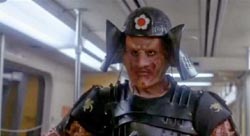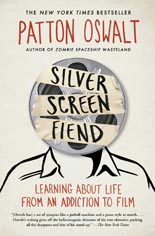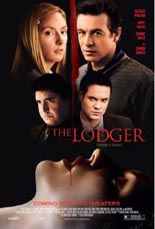
 In West Hollywood, streetwalkers hit the asphalt as victims of a serial killer — one who may be copycatting the crimes of Jack the Ripper, if the theory of L.A. police detective Manning (Alfred Molina, Spider-Man 2) proves correct. Well, of course it does, and it doesn’t take the removal of one hooker’s reproductive organs to see that!
In West Hollywood, streetwalkers hit the asphalt as victims of a serial killer — one who may be copycatting the crimes of Jack the Ripper, if the theory of L.A. police detective Manning (Alfred Molina, Spider-Man 2) proves correct. Well, of course it does, and it doesn’t take the removal of one hooker’s reproductive organs to see that!
Meanwhile, across town, the mysterious Malcolm (Simon Baker, Land of the Dead) rents the backyard guest house of a clinically depressed and sexually frustrated housewife named Ellen (Hope Davis, Real Steel) and her loutish schlub of a hubby (Donal Logue, Shark Night 3D) for $1,000 a month — brekky included! Claiming to be a writer, Malcolm is comically suspect from the start, insisting he “must not be disturbed,” that he have not only “total privacy,” but possess “the only key.” Ellen’s reaction to this: Get all gussied up and pray for a pity hump.
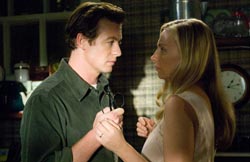 If any of The Lodger’s premise sounds familiar, it should; this multiplex-skipping version by David Ondaatje (who wrote and produced in addition to directing) is the fifth of too many movies made from Marie Belloc Lowndes’ 1913 novel, most famously in a 1927 production by Alfred Hitchcock, making his suspense-genre debut. Why Ondaatje even tried is a larger mystery than the one on which the venerable story is built; he brings nothing new to the material but cheap, flashy camera tricks and multiple scenes of internet searches, all of which serve to highlight his film’s immense deficiencies. It’s not that The Lodger is a hoary chestnut, but that Ondaatje has bitten off more than he can chew, even for an expectations-lowered DVD premiere. His first feature (which he has yet to follow up) is overwrought, overcooked and overgrazed with Mozart sauce in an attempt to at least sound dramatic.
If any of The Lodger’s premise sounds familiar, it should; this multiplex-skipping version by David Ondaatje (who wrote and produced in addition to directing) is the fifth of too many movies made from Marie Belloc Lowndes’ 1913 novel, most famously in a 1927 production by Alfred Hitchcock, making his suspense-genre debut. Why Ondaatje even tried is a larger mystery than the one on which the venerable story is built; he brings nothing new to the material but cheap, flashy camera tricks and multiple scenes of internet searches, all of which serve to highlight his film’s immense deficiencies. It’s not that The Lodger is a hoary chestnut, but that Ondaatje has bitten off more than he can chew, even for an expectations-lowered DVD premiere. His first feature (which he has yet to follow up) is overwrought, overcooked and overgrazed with Mozart sauce in an attempt to at least sound dramatic.
Ondaatje’s adaptation holds more poor performances than his name does vowels. As Manning’s partner, The League of Extraordinary Gentlemen’s Shane West is the worst offender, all squints and/or scowls, but that’s modus operandi; ditto Baker’s uncanny ability to be a near-cipher of a screen presence. For being terrific actors, Davis and Molina astonish — and not in the good way — in how astray they seem to be have led. At least Davis gets to go through many of her scenes saying little to nothing; foisted in Molina’s mouth are foolish speeches such as, “Jack the Ripper was the personification of evil … his fucking shadow lurking in the darkest corner of the human mind.”
Had those two amped up the camp elements — and I suspect they wanted to — we’d have a Lodger worth the stay. Oh, it still would be awful, but awful and watchable. As is, the only reward is skipping to the penultimate scene, just to hear RED’s Rebecca Pidgeon enunciate “autoerotic.” —Rod Lott

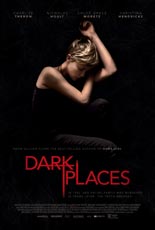

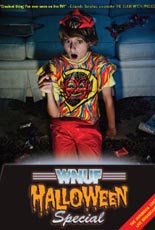
 Originally broadcast on Oct. 31, 1987, the
Originally broadcast on Oct. 31, 1987, the 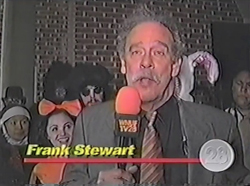
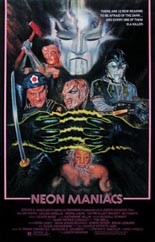
 One cannot credibly discuss
One cannot credibly discuss 